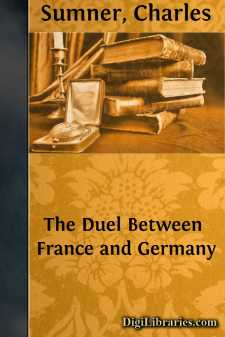Categories
- Antiques & Collectibles 13
- Architecture 36
- Art 48
- Bibles 22
- Biography & Autobiography 813
- Body, Mind & Spirit 142
- Business & Economics 28
- Children's Books 15
- Children's Fiction 12
- Computers 4
- Cooking 94
- Crafts & Hobbies 4
- Drama 346
- Education 46
- Family & Relationships 57
- Fiction 11829
- Games 19
- Gardening 17
- Health & Fitness 34
- History 1377
- House & Home 1
- Humor 147
- Juvenile Fiction 1873
- Juvenile Nonfiction 202
- Language Arts & Disciplines 88
- Law 16
- Literary Collections 686
- Literary Criticism 179
- Mathematics 13
- Medical 41
- Music 40
- Nature 179
- Non-Classifiable 1768
- Performing Arts 7
- Periodicals 1453
- Philosophy 64
- Photography 2
- Poetry 896
- Political Science 203
- Psychology 42
- Reference 154
- Religion 513
- Science 126
- Self-Help 84
- Social Science 81
- Sports & Recreation 34
- Study Aids 3
- Technology & Engineering 59
- Transportation 23
- Travel 463
- True Crime 29
The Best Portraits in Engraving
by: Charles Sumner
Categories:
Description:
Excerpt
THE BEST PORTRAITS IN ENGRAVING.
Engraving is one of the fine arts, and in this beautiful family has been the especial handmaiden of painting. Another sister is now coming forward to join this service, lending to it the charm of color. If, in our day, the "chromo" can do more than engraving, it cannot impair the value of the early masters. With them there is no rivalry or competition. Historically, as well as æsthetically, they will be masters always.
Everybody knows something of engraving, as of printing, with which it was associated in origin. School-books, illustrated papers, and shop windows are the ordinary opportunities open to all. But while creating a transient interest, or, perhaps, quickening the taste, they furnish little with regard to the art itself, especially in other days. And yet, looking at an engraving, like looking at a book, may be the beginning of a new pleasure and a new study.
Each person has his own story. Mine is simple. Suffering from continued prostration, disabling me from the ordinary activities of life, I turned to engravings for employment and pastime. With the invaluable assistance of that devoted connoisseur, the late Dr. Thies, I went through the Gray collection at Cambridge, enjoying it like a picture-gallery. Other collections in our country were examined also. Then, in Paris, while undergoing severe medical treatment, my daily medicine for weeks was the vast cabinet of engravings, then called Imperial, now National, counted by the million, where was everything to please or instruct. Thinking of those kindly portfolios, I make this record of gratitude, as to benefactors. Perhaps some other invalid, seeking occupation without burden, may find in them the solace that I did. Happily, it is not necessary to visit Paris for the purpose. Other collections, on a smaller scale, will furnish the same remedy.
In any considerable collection, portraits occupy an important place. Their multitude may be inferred when I mention that, in one series of portfolios, in the Paris cabinet, I counted no less than forty-seven portraits of Franklin and forty-three of Lafayette, with an equal number of Washington, while all the early Presidents were numerously represented. But, in this large company, there are very few possessing artistic value. The great portraits of modern times constitute a very short list, like the great poems or histories, and it is the same with engravings as with pictures. Sir Joshua Reynolds, explaining the difference between an historical painter and a portrait-painter, remarks that the former "paints men in general, a portrait-painter a particular man, and consequently a defective model." A portrait, therefore, may be an accurate presentment of its subject without æsthetic value.
But here, as in other things, genius exercises its accustomed sway without limitation. Even the difficulties of a "defective model" did not prevent Raffaelle, Titian, Rembrandt, Rubens, Velasquez, or Vandyck from producing portraits precious in the history of art. It would be easy to mention heads by Raffaelle, yielding in value to only two or three of his larger masterpieces, like the Dresden Madonna. Charles the Fifth stooped to pick up the pencil of Titian, saying "it becomes Cæsar to serve Titian!" True enough; but this unprecedented compliment from the imperial successor of Charlemagne attests the glory of the portrait-painter. The female figures of Titian, so much admired under the names of Flora, La Bella, his daughter, his mistress, and even his Venus, were portraits from life. Rembrandt turned from his great triumphs in his own peculiar school to portraits of unwonted power; so also did Rubens, showing that in this department his universality of conquest was not arrested. To these must be added Velasquez and Vandyck, each of infinite genius, who won fame especially as portrait-painters. And what other title has Sir Joshua himself?
Historical pictures are often collections of portraits arranged so as to illustrate an important event. Such is the famous Peace of Münster, by Terburg, just presentedSuyderhoef. by a liberal Englishman to the National Gallery at London. Here are the plenipotentiaries of Holland, Spain, and Austria, uniting in the great treaty which constitutes an epoch in the Law of Nations....



